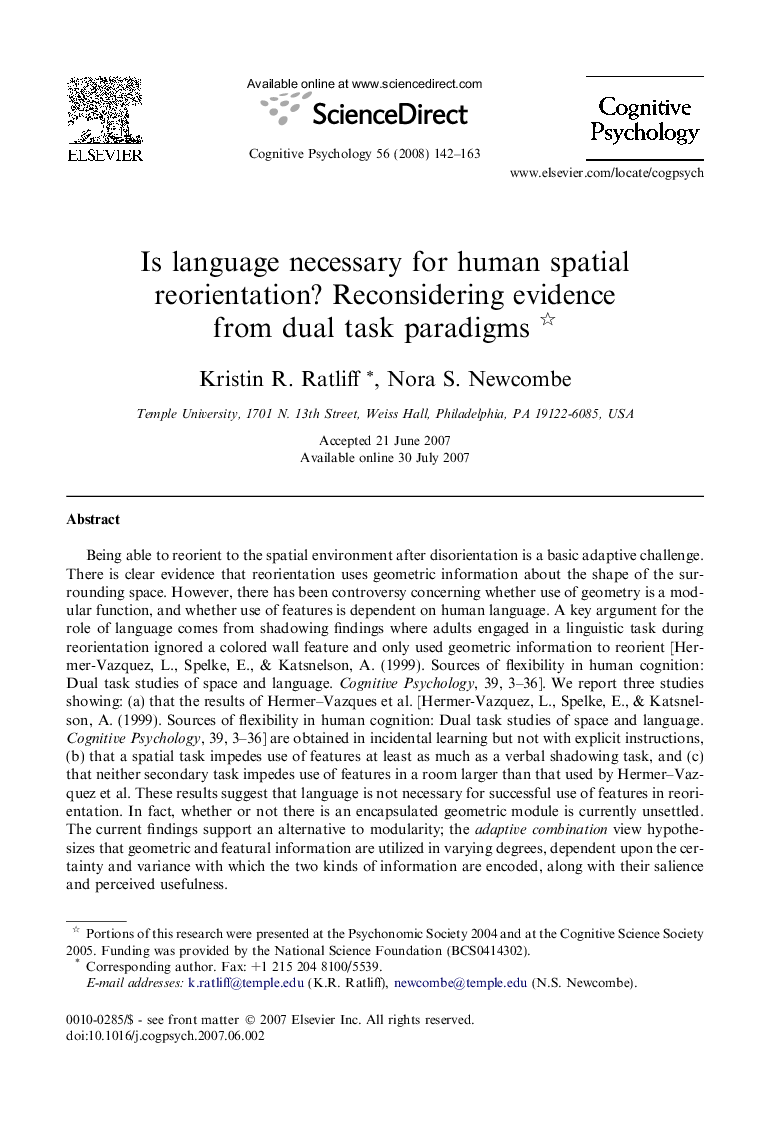| Article ID | Journal | Published Year | Pages | File Type |
|---|---|---|---|---|
| 917106 | Cognitive Psychology | 2008 | 22 Pages |
Being able to reorient to the spatial environment after disorientation is a basic adaptive challenge. There is clear evidence that reorientation uses geometric information about the shape of the surrounding space. However, there has been controversy concerning whether use of geometry is a modular function, and whether use of features is dependent on human language. A key argument for the role of language comes from shadowing findings where adults engaged in a linguistic task during reorientation ignored a colored wall feature and only used geometric information to reorient [Hermer-Vazquez, L., Spelke, E., & Katsnelson, A. (1999). Sources of flexibility in human cognition: Dual task studies of space and language. Cognitive Psychology, 39, 3–36]. We report three studies showing: (a) that the results of Hermer–Vazques et al. [Hermer-Vazquez, L., Spelke, E., & Katsnelson, A. (1999). Sources of flexibility in human cognition: Dual task studies of space and language. Cognitive Psychology, 39, 3–36] are obtained in incidental learning but not with explicit instructions, (b) that a spatial task impedes use of features at least as much as a verbal shadowing task, and (c) that neither secondary task impedes use of features in a room larger than that used by Hermer–Vazquez et al. These results suggest that language is not necessary for successful use of features in reorientation. In fact, whether or not there is an encapsulated geometric module is currently unsettled. The current findings support an alternative to modularity; the adaptive combination view hypothesizes that geometric and featural information are utilized in varying degrees, dependent upon the certainty and variance with which the two kinds of information are encoded, along with their salience and perceived usefulness.
